1 The Organization of American Schools ED

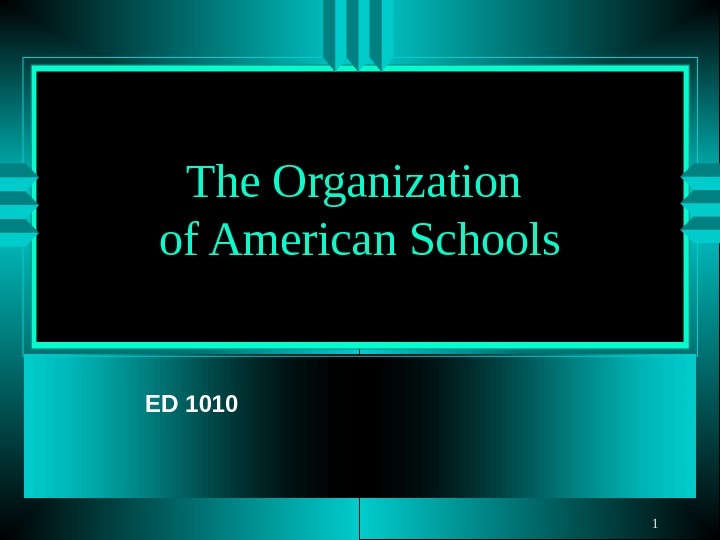
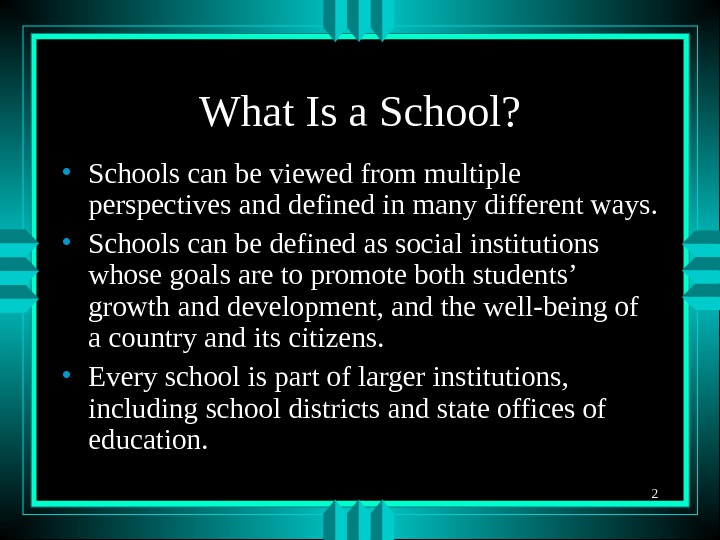
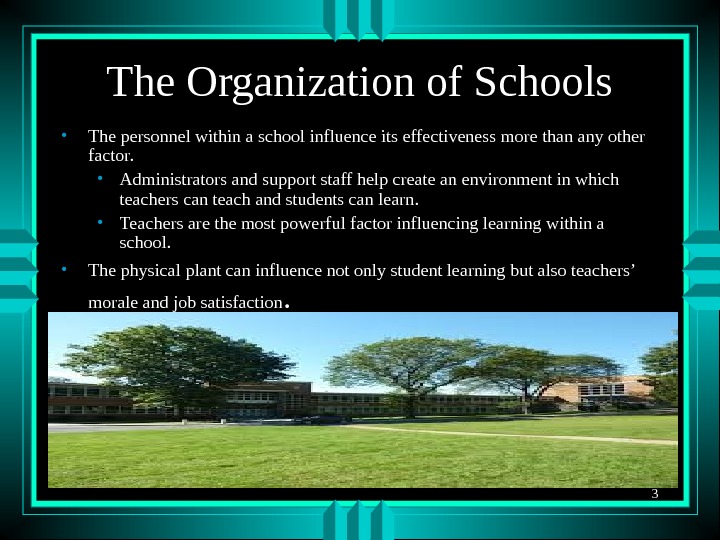
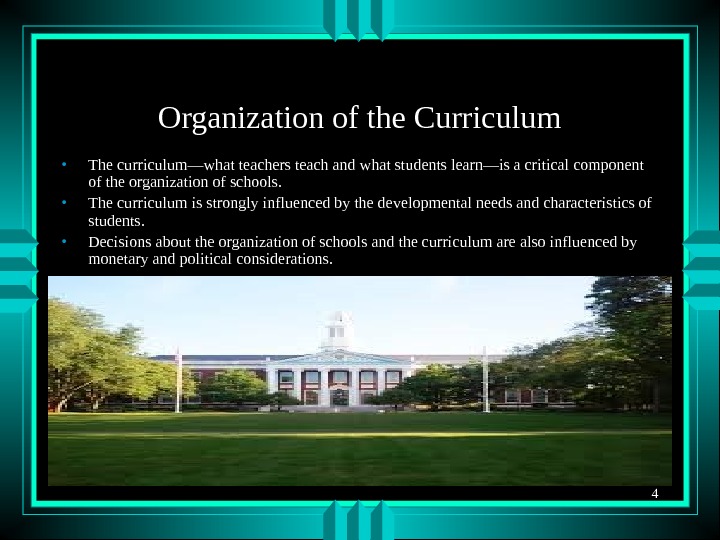
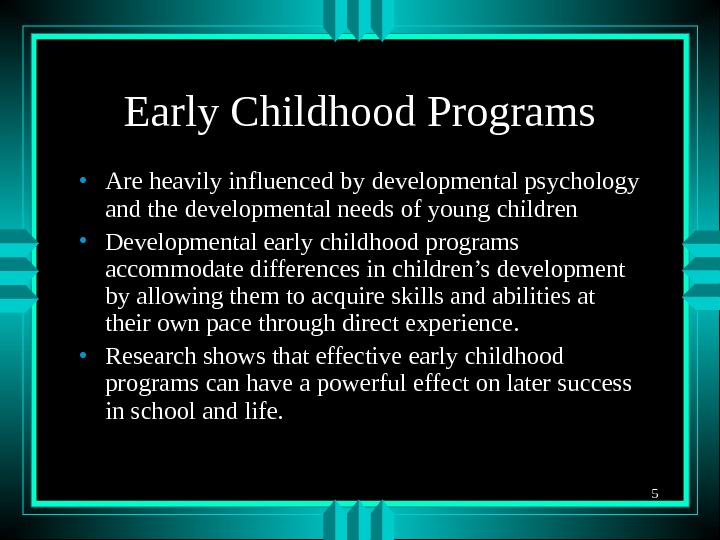
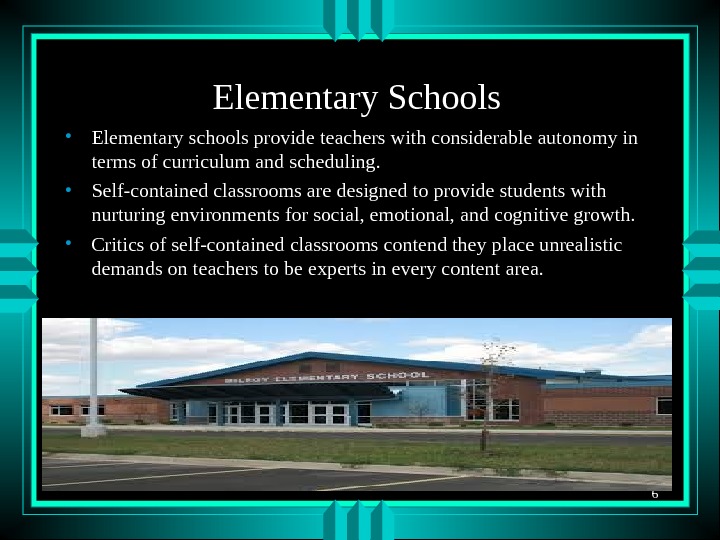
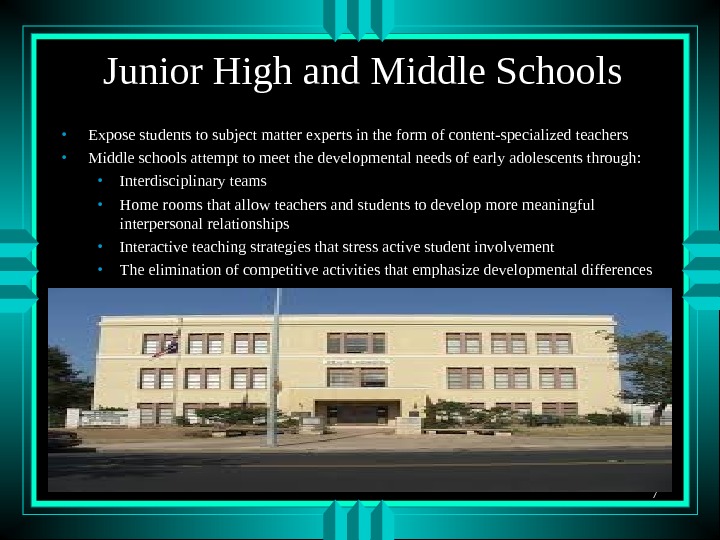
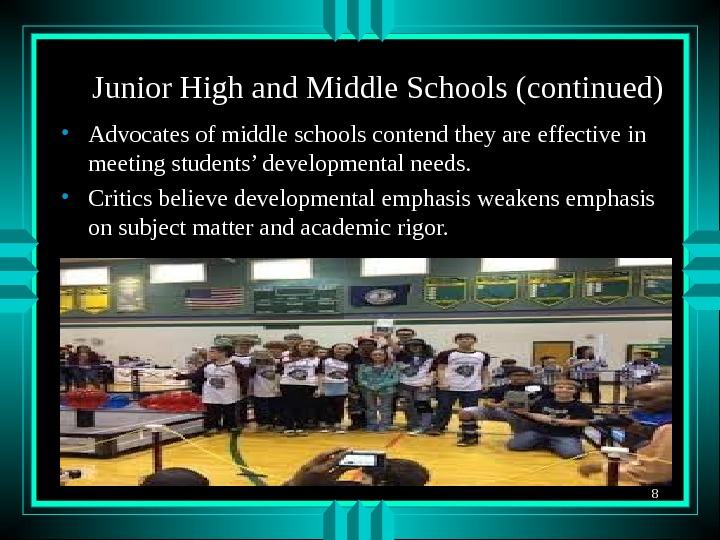
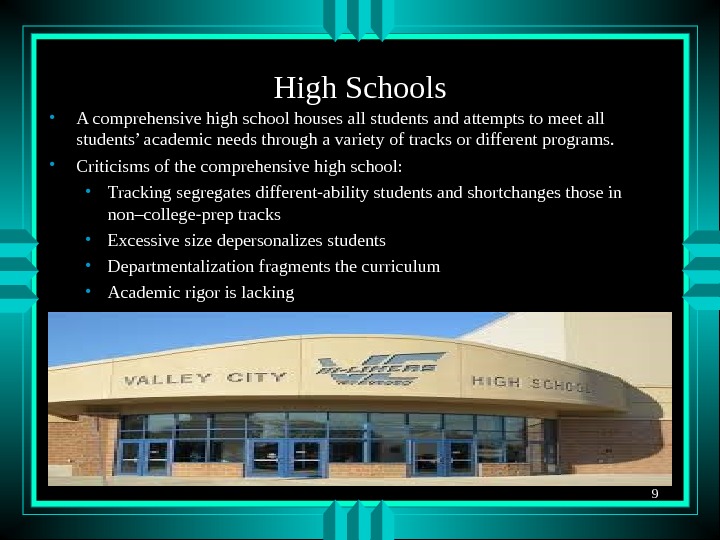
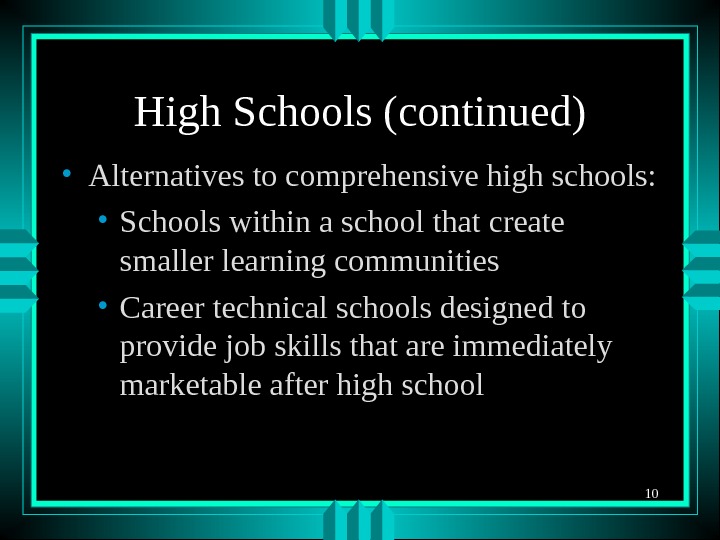
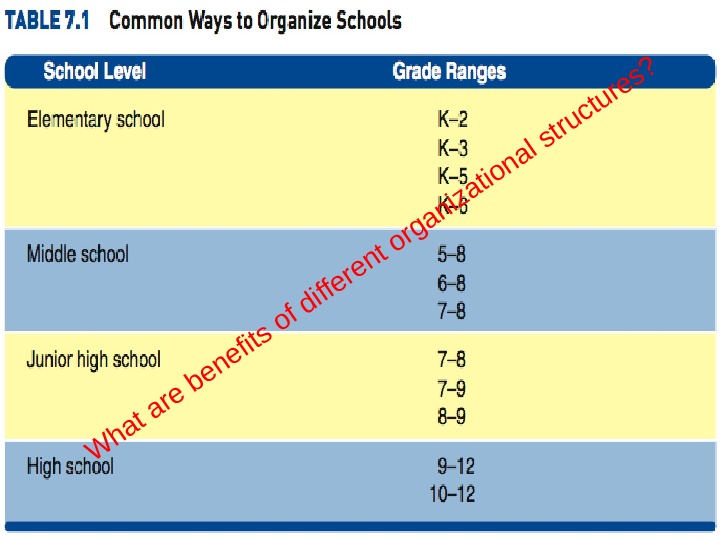
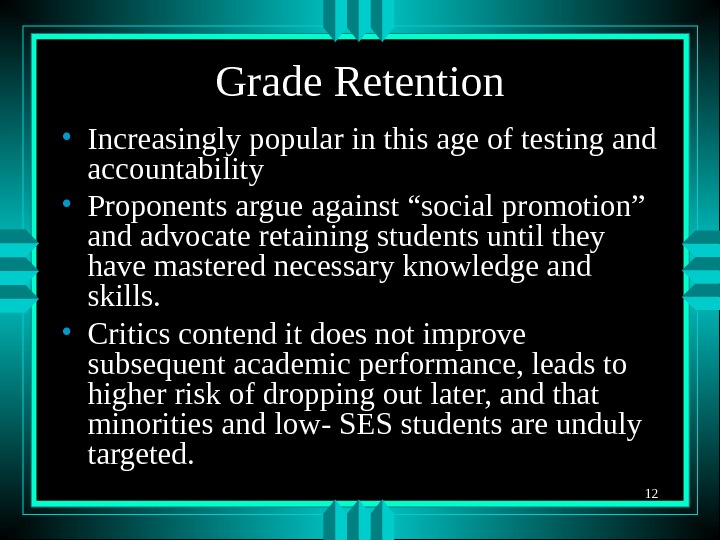
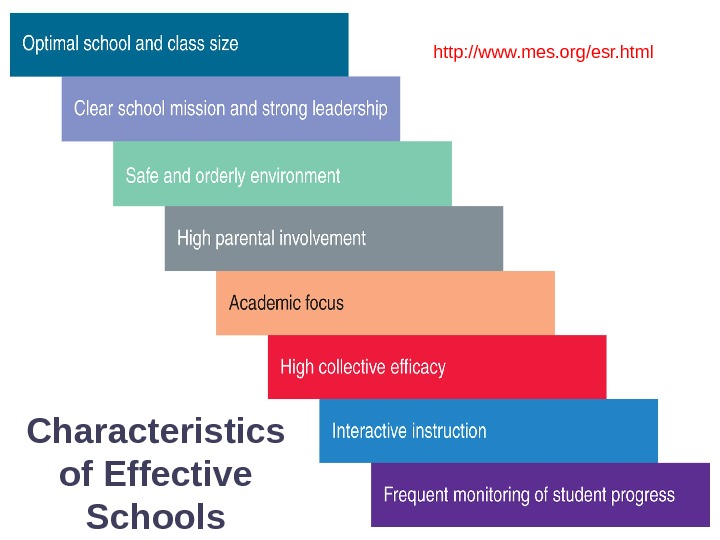
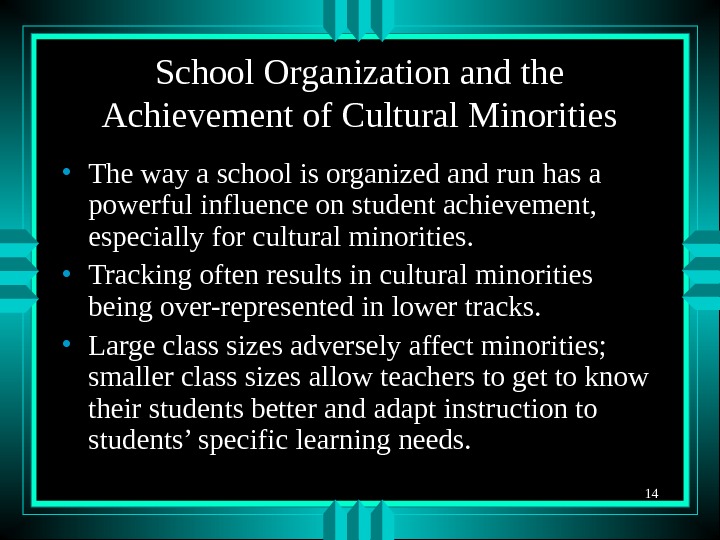
- Размер: 1.4 Mегабайта
- Количество слайдов: 14
Описание презентации 1 The Organization of American Schools ED по слайдам
 1 The Organization of American Schools
1 The Organization of American Schools
 2 What Is a School? • Schools can be viewed from multiple perspectives and defined in many different ways. • Schools can be defined as social institutions whose goals are to promote both students’ growth and development, and the well-being of a country and its citizens. • Every school is part of larger institutions, including school districts and state offices of education.
2 What Is a School? • Schools can be viewed from multiple perspectives and defined in many different ways. • Schools can be defined as social institutions whose goals are to promote both students’ growth and development, and the well-being of a country and its citizens. • Every school is part of larger institutions, including school districts and state offices of education.
 3 The Organization of Schools • The personnel within a school influence its effectiveness more than any other factor. • Administrators and support staff help create an environment in which teachers can teach and students can learn. • Teachers are the most powerful factor influencing learning within a school. • The physical plant can influence not only student learning but also teachers’ morale and job satisfaction.
3 The Organization of Schools • The personnel within a school influence its effectiveness more than any other factor. • Administrators and support staff help create an environment in which teachers can teach and students can learn. • Teachers are the most powerful factor influencing learning within a school. • The physical plant can influence not only student learning but also teachers’ morale and job satisfaction.
 4 Organization of the Curriculum • The curriculum—what teachers teach and what students learn—is a critical component of the organization of schools. • The curriculum is strongly influenced by the developmental needs and characteristics of students. • Decisions about the organization of schools and the curriculum are also influenced by monetary and political considerations.
4 Organization of the Curriculum • The curriculum—what teachers teach and what students learn—is a critical component of the organization of schools. • The curriculum is strongly influenced by the developmental needs and characteristics of students. • Decisions about the organization of schools and the curriculum are also influenced by monetary and political considerations.
 5 Early Childhood Programs • Are heavily influenced by developmental psychology and the developmental needs of young children • Developmental early childhood programs accommodate differences in children’s development by allowing them to acquire skills and abilities at their own pace through direct experience. • Research shows that effective early childhood programs can have a powerful effect on later success in school and life.
5 Early Childhood Programs • Are heavily influenced by developmental psychology and the developmental needs of young children • Developmental early childhood programs accommodate differences in children’s development by allowing them to acquire skills and abilities at their own pace through direct experience. • Research shows that effective early childhood programs can have a powerful effect on later success in school and life.
 6 Elementary Schools • Elementary schools provide teachers with considerable autonomy in terms of curriculum and scheduling. • Self-contained classrooms are designed to provide students with nurturing environments for social, emotional, and cognitive growth. • Critics of self-contained classrooms contend they place unrealistic demands on teachers to be experts in every content area.
6 Elementary Schools • Elementary schools provide teachers with considerable autonomy in terms of curriculum and scheduling. • Self-contained classrooms are designed to provide students with nurturing environments for social, emotional, and cognitive growth. • Critics of self-contained classrooms contend they place unrealistic demands on teachers to be experts in every content area.
 7 Junior High and Middle Schools • Expose students to subject matter experts in the form of content-specialized teachers • Middle schools attempt to meet the developmental needs of early adolescents through: • Interdisciplinary teams • Home rooms that allow teachers and students to develop more meaningful interpersonal relationships • Interactive teaching strategies that stress active student involvement • The elimination of competitive activities that emphasize developmental differences
7 Junior High and Middle Schools • Expose students to subject matter experts in the form of content-specialized teachers • Middle schools attempt to meet the developmental needs of early adolescents through: • Interdisciplinary teams • Home rooms that allow teachers and students to develop more meaningful interpersonal relationships • Interactive teaching strategies that stress active student involvement • The elimination of competitive activities that emphasize developmental differences
 8 Junior High and Middle Schools (continued) • Advocates of middle schools contend they are effective in meeting students’ developmental needs. • Critics believe developmental emphasis weakens emphasis on subject matter and academic rigor.
8 Junior High and Middle Schools (continued) • Advocates of middle schools contend they are effective in meeting students’ developmental needs. • Critics believe developmental emphasis weakens emphasis on subject matter and academic rigor.
 9 High Schools • A comprehensive high school houses all students and attempts to meet all students’ academic needs through a variety of tracks or different programs. • Criticisms of the comprehensive high school: • Tracking segregates different-ability students and shortchanges those in non–college-prep tracks • Excessive size depersonalizes students • Departmentalization fragments the curriculum • Academic rigor is lacking
9 High Schools • A comprehensive high school houses all students and attempts to meet all students’ academic needs through a variety of tracks or different programs. • Criticisms of the comprehensive high school: • Tracking segregates different-ability students and shortchanges those in non–college-prep tracks • Excessive size depersonalizes students • Departmentalization fragments the curriculum • Academic rigor is lacking
 10 High Schools (continued) • Alternatives to comprehensive high schools: • Schools within a school that create smaller learning communities • Career technical schools designed to provide job skills that are immediately marketable after high school
10 High Schools (continued) • Alternatives to comprehensive high schools: • Schools within a school that create smaller learning communities • Career technical schools designed to provide job skills that are immediately marketable after high school
 11 W hat are benefits of different organizational structures?
11 W hat are benefits of different organizational structures?
 12 Grade Retention • Increasingly popular in this age of testing and accountability • Proponents argue against “social promotion” and advocate retaining students until they have mastered necessary knowledge and skills. • Critics contend it does not improve subsequent academic performance, leads to higher risk of dropping out later, and that minorities and low- SES students are unduly targeted.
12 Grade Retention • Increasingly popular in this age of testing and accountability • Proponents argue against “social promotion” and advocate retaining students until they have mastered necessary knowledge and skills. • Critics contend it does not improve subsequent academic performance, leads to higher risk of dropping out later, and that minorities and low- SES students are unduly targeted.
 13 Characteristics of Effective Schools http: //www. mes. org/esr. html
13 Characteristics of Effective Schools http: //www. mes. org/esr. html
 14 School Organization and the Achievement of Cultural Minorities • The way a school is organized and run has a powerful influence on student achievement, especially for cultural minorities. • Tracking often results in cultural minorities being over-represented in lower tracks. • Large class sizes adversely affect minorities; smaller class sizes allow teachers to get to know their students better and adapt instruction to students’ specific learning needs.
14 School Organization and the Achievement of Cultural Minorities • The way a school is organized and run has a powerful influence on student achievement, especially for cultural minorities. • Tracking often results in cultural minorities being over-represented in lower tracks. • Large class sizes adversely affect minorities; smaller class sizes allow teachers to get to know their students better and adapt instruction to students’ specific learning needs.

